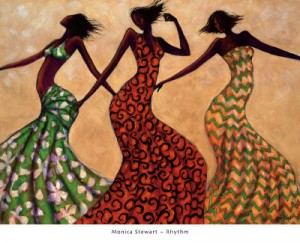 For many, music exists to express emotions. Music stimulates both psychological mood and physiological changes including heart rate and breathing. Music can help anxiety. It drives the body with loud, fast music making people lively and promoting dance. Slow, soft music can make people calm or sad. Are these inherent responses to music or are they culturally learned? To find out we must look at the brain responses to music emotion and evolution.
For many, music exists to express emotions. Music stimulates both psychological mood and physiological changes including heart rate and breathing. Music can help anxiety. It drives the body with loud, fast music making people lively and promoting dance. Slow, soft music can make people calm or sad. Are these inherent responses to music or are they culturally learned? To find out we must look at the brain responses to music emotion and evolution.
Mood Music
There are many characteristics of music affecting our emotions. Sad music seems to use lower pitch, smooth transitions, and low intensity movements. Happy music appears to use loud, fast and high pitch, associated with rapid  high-energy movements used for dancing. While music effects physiological system, it also stimulates the reward centers. In fact, music can be addictive, bringing great rewards in the excitement of playing live music, dancing at live concerts, and just listening to that favorite song over and over.
high-energy movements used for dancing. While music effects physiological system, it also stimulates the reward centers. In fact, music can be addictive, bringing great rewards in the excitement of playing live music, dancing at live concerts, and just listening to that favorite song over and over.
Music is great to one person, offensive to another.
How is Emotion Expressed?
One way to look at emotion in music is through inherent aspects of the structure of music – major/minor mode, tempo, timbre, melody, etc. Another way is to examine whether expectation and emotion flows from performance.
Emotion is expressed by the subtle changes musicians make in music not the repetition. Technically excellent musicians are not considered interesting without alterations and changes in their renditions. It is the interpretation that is expressive. Music that is mathematically averaged is not interesting. But, if there are too many changes people don’t like that either.
The more surprising the piece is the more emotion is generated. A march in a minor scale that breaks into a major causes goose bumps. Also emotion depends upon imperfections, which can be seen at live concerts.
When studying emotion in music, autistic people could tell if the piece was supposed to be happy, sad or scary, although they personally found them equal.
Music and Emotion in Two Cultures
There are unique relations of emotion to movement across at least two cultures: U.S and Cambodia. In an experiment, the same emotion was noted with factors of regularity of rate, direction, step, size and dissonance. Each emotion had a unique combination of features, which was picked up by people in both cultures.
Music has a primal effect on all people, but not always the same effect. It is the best device for stimulating many different kinds of human emotions, and directly effects motivation. Spiritual music can elevate listeners, patriotic music can stimulate bravery, and music of all different types can stimulate a wide range of emotions. Music can stimulate sexual behavior.
Roots of Music and Emotion

Experience builds and then prunes neural networks related to experience with sounds for language and music. Mice with an environment of only white noise, with no rhythm or pitch, do not later recognize the sounds of life and have impaired ability to recognize pitch.
Some types of music appear to trigger specific emotions, but it is not clear if it is based on culture or biology:
- Loud, low, sounds with dissonant intervals stimulate fear
- Lullabies are sung to children in certain tones that are different than normal speech. Lullabies are lower, slower and softer. For children’s play, songs are faster, higher with prominent rhythm. Children become used to these tones and prefer them.
- Falling pitch denotes comfort.
- Wide ranging pitch, often bell shaped, means joy or surprise.
- When babies are rocked to sleep with singing, the major rhythm is breath and heart beat. These movements and sounds become neural networks.
When music produces chills down the spine, the effect is from reward brain centers in nucleus accumbens, brainstem, forebrain, and amygdala with cortex orbitofrontal and insula – same as any other reward for food, sex, drugs. Why does an abstract sound stimulate these centers? Usually because of the associations and expectations. It is possible that most of the emotional responses of music are culturally determined and trained.
Some believe that dissonance is inherent in the anatomy of the ear. Dissonant intervals cause specific vibrations in the basilar membrane of the cochlea triggering neuronal firing. The basilar membrane vibrates in several places when a chord is played and these interact. Also, it is difficult to hear chords if there are many different tones in it. The different sounds make wave interference patterns on the membrane itself.
But, others think these dissonances are also culturally learned.
Question of Universality
Some assume that response to a beat is universal in human beings. However, Mongolian throat singers and a Japanese style of music, gagaku, do not use a steady beat at all. A style of music called heterophonic, with many examples around the world including South American, Scotch, Ukraine and Arabian music, has each member of a group freely express a melody without a definite beat.

Western music uses simple rhythm, but around the world more complex rhythms are used. Very young children can perceive complex rhythms such as 7 on 11 from certain cultures but lose this ability if not exposed to it before age 1.
Another difference around the world is how sound is classified. In the west, a note is high or low, going up on the scale on a piano from left to right. But in Bali, the note is smaller (low) or larger (high), in the Amazon “young” or “old”, and in Zimbabwe it is “crocodile” (low) or “those who follow crocodiles” (high).
Perhaps most important is the fact that circumstances greatly effect emotion. For example, the same note played while sitting in an MRI and at a child’s first recital would have very different effects
Is Music Effect A Product of Culture.
If a great composer writes a piece of music that is able to stimulate a spiritual experience, it may also be played in elevators as background music with no emotional effect. Different parts of a musical piece might evoke different emotions, anticipation at the beginning, excitement at a climax, and relaxation at the end. Or it can be just aggravating. People tend to know which pieces they can rely on for a lift, to calm, or to represent truth or religious experience.
Many people use music for specific activities – work, athletics, exercise, relaxation, sleep, and to help anxiety. Music is now sold as treatments to relax, to be happy, to dance, and to make babies more intelligent. But, the Mozart effect has not been proven. People revolt against some music until it is widely learned. Then they can’t get it out of their head.
Unfortunately, because of the Internet, indigenous music is becoming more limited and most music is developing a western bias. Therefore, the necessary research to determine cultural versus biological effects might never be able to be done.
Evolution of Speech and Music
The current best guess is that human language evolved about 100,000 years ago and hasn’t changed much since. It is not clear when music evolved.
In a previous post, the connection of speech and music were discussed. There is support for a recent theory that music is a general phenomenon and that speech developed as a special form of music (see post). In the infant music and speech have much more brain overlap than adults, and only diverge as the infant grows. Two culturally determined streams then develop, speech primarily in the left brain, and music in both right and left.
Human language could have evolved from birdsong. Darwin wrote in The Descent of Man: “the sounds of birds offer in several respects the nearest analogy to language.” Darwin believed that humans could sing before language.
 One recent theory of evolution posits that language evolved as a combination of two kinds of animal communication. One type of communication involves meaning, such as the symbolic communication in animals – apes with different sounds for different predators and the symbolic dance language of bees. If bees have such an advanced language probably other creatures do also.
One recent theory of evolution posits that language evolved as a combination of two kinds of animal communication. One type of communication involves meaning, such as the symbolic communication in animals – apes with different sounds for different predators and the symbolic dance language of bees. If bees have such an advanced language probably other creatures do also.
 The second type of animal communication is the elaborate expressive song of birds, which gives melody and feeling.
The second type of animal communication is the elaborate expressive song of birds, which gives melody and feeling.
This theory postulates that there are two layers in human language – expression and the core symbolic content – that combined to form human speech.
 For music to evolve from the birds and the bees, evolution theory assumes it is a biological function as pervasive as eating, drinking, and sex. Understanding sounds in the environment has great importance to animals. It is not clear, however, what the biological value is for any of the creative arts that humans spend so much time on. Perhaps the drive for complexity and creation is inherent in mind. Other sound based theories include promoting social cohesion, such as in war and religion or in pacifying children.
For music to evolve from the birds and the bees, evolution theory assumes it is a biological function as pervasive as eating, drinking, and sex. Understanding sounds in the environment has great importance to animals. It is not clear, however, what the biological value is for any of the creative arts that humans spend so much time on. Perhaps the drive for complexity and creation is inherent in mind. Other sound based theories include promoting social cohesion, such as in war and religion or in pacifying children.
Do musical traits have genetic basis shared with other cognition?
The presence of music in all cultures, except perhaps recent extremist religious sects that kill those who perform music, implies genetics. But, music around the world is quite variable. Emotional response seems to be cultural, but pitch interval perception is in biological hardware
What is remarkable is how human sound processing has been produced in evolution. The brain development is extremely elaborate. Dramatic new research shows great complexity orchestrating the use of a large number of muscles for even the simplest syllable of human speech.
Movement
 Movement came first in evolution. It is informative that when looking at the brain during music, it resembles movement. With the extreme multi sensory networks, music rhythms make humans want to move to the beat.
Movement came first in evolution. It is informative that when looking at the brain during music, it resembles movement. With the extreme multi sensory networks, music rhythms make humans want to move to the beat.
Movement affects the interpretation of sound. Playing six beats with no emphasis will be interpreted as either a waltz or a march. Children who jump on the second beat hear a march; those on the third beat hear a waltz
The vestibular system is very old in evolution and is critical for perception of rhythm and movement. Therefore, it has been thought that music evolved with dance.
Is Rhythm Perception Universal
Of all aspects of music, rhythm seems to be the most universal. Tapping is fairly universal human result of music and has dramatic effects on neuroplasticity (see previous post).
For 100 years, western scientists have postulated that certain rhythmic perceptions are universal – hearing long notes as final in alternating short- long. But, recently, these have not been shown to be universal either. Japanese hear the opposite based on cultural music patterns. The key factor in this rhythm perception appears to be language. English puts short words before longer -“the book” making well-known patterns. Japanese does the opposite creating frequent long-short patterns.
Evolution Of Music From Animals
Recently, it has been demonstrated that modern human characteristics have probably existed for, perhaps, 200 thousand years, but the exact history is not known. Evidence of early human music has also been found. A flute, for example, was found from more than 40,000 years ago. Music has been a social and cultural event for a very long time.
For many years it has been assumed by scientists that animals lack music. This is in the process of being disproven. There are two musical traits considered to be unique to humans – relative pitch, recognizing pitch level of melody, and beat induction, picking up a regular beat from a rhythm, which varies. But, recently birds have been noted to possibly have beat induction, including the famous Alex, the parrot. There is now a popular Youtube video of a bird dancing and adjusting to the beat.
There is increasing evidence of both music and dance in animals. Previous posts have emphasized that studying animals in the laboratory possibly has very little correlation with real animal abilities and habits when they are in nature. For a direct experience, I would encourage the reader to look at the series of videos on the right side of the animal page of this website. These videos appear to show interest in music by whales, dogs and cows.
Both birds and whales sing, and pass on songs culturally. Recently, it was shown that songs and the names of birds were learned from parents and then passed on to others. Whales develop songs that become popular and are gradually spread throughout the ocean in about a year. Recent research shows precursors of emotional communication in dolphins, whales, primates, house mice, rats, cats, bats, African elephants.
Important recent findings that support the evolution of music and speech from animals include:
- Recent analysis of birdsong shows that it resembles the expressive part of human speech. Some assume that birds do not also express the content layer. In this view the entire song has one meaning.
- A recent study found that birds’ mothers give each a name as a specific song sound.
- Both birds and humans are best at picking up language in childhood.
- The bird’s brain is organized with a large number of small movements to synchronize the current sounds with the next sounds in a song.
- The finch puts together multiple different songs allowing for complex communication. The nightingale can use more than 100 different melodies in a communication.
- Human languages and birdsong have specific limited number of rhythmic patterns.
- Songbirds learn complex behavior including the sounds that they use. These sounds, similar to human speech learning, occur in childhood with sensorimotor integration gradually refining songs taught by an elder. The young bird must first hear and memorize sounds. From this neural template they sing these sounds, and adjust through feedback. The brain center for this in the bird’s brainstem has recently been described finding specific neurons for the tutor’s sound and the young birds sound.
- Another recent connection is that genes and gene products produced for speech in the cortex and basal ganglia are similar in humans and zebra finches and a parakeet.
- The neural reward system, that is activated in female birds listening to males singing, is the same as humans listening to music they like.
- A male cockatoo adjusted his dance to changes in rhythm. This same ability to respond to rhythm is observed in parrots, even the most famous parrot of all, Alex.
Music Emotion and Evolution
 With music having such a prominent place in human life, and such powerful multi sensory neuroplastic effects, it is certainly reasonable to think that there are evolutionary precursors for it. Emotional expression in music is not clearly cultural or brain based.
With music having such a prominent place in human life, and such powerful multi sensory neuroplastic effects, it is certainly reasonable to think that there are evolutionary precursors for it. Emotional expression in music is not clearly cultural or brain based.
Although there is not enough information for a definite theory of the origin of music, increasing data points to animal song and animal communication. With animals increasingly demonstrating, intelligence, music and emotional sound expression, and music having such profound effects on all aspects of social life, it is reasonable to consider that it began before human beings.